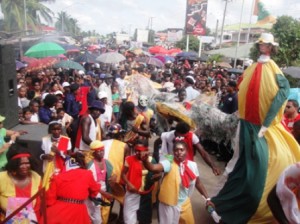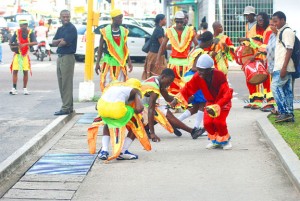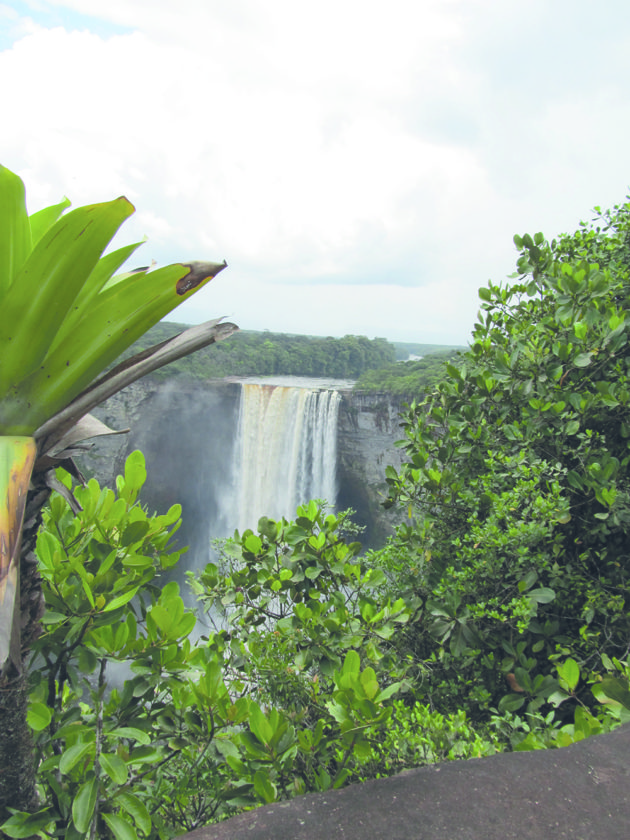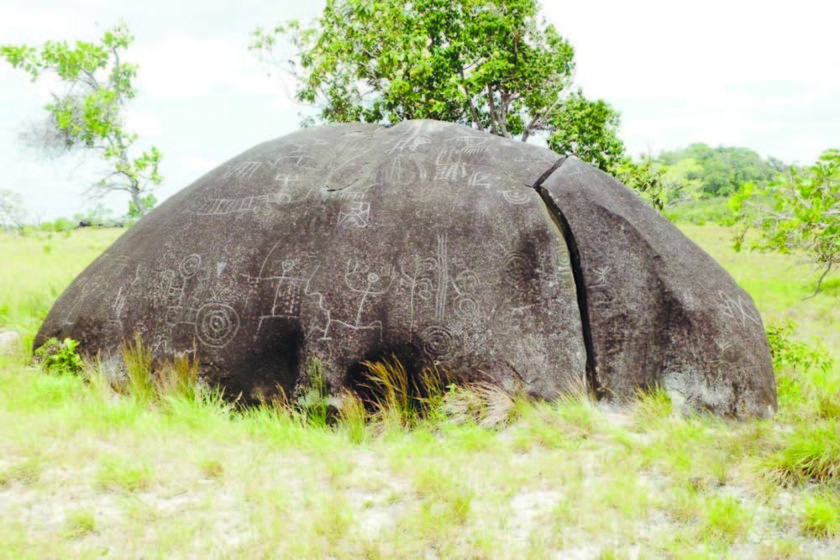
Masquerade is said to have its genesis in Guyana from African slaves during the European religious Christmas season, when the country was a colony of Britain.
Slaves, who were forbidden to practice their traditions, were slightly less restricted during the season, and were allowed to visit other plantations and revel with other slaves where celebratory drumming and dancing in the streets were also allowed at this time.
The dancing, drumming and elaborate costumes and effigies developed by the colonial masquerade bands reflected religious festival traditions of the Ibo and Yoruba tribes of West Africa during the time of the Harmattan (dry, dusty Nov – March winds blowing from the Sahara toward the west African coast) and harvest celebrations.
According to sources, the Ibo and Yoruba believed that this was the time when their Gods, dressed in costumes and masks, came to visit, and performed dances.
While the slaves danced in entertainment, much of the spiritual traditions were retained in the masks and symbols that represented ancestors and gods, along with the acrobatics and costumes, which represented, or perhaps theatrically portrayed, stories of strength, agility, fertility, battle, evil and terror.
Over the years, European influences were adapted. According to Noah Banks in his article ‘Christmas Past in Guyana’ (Caribbean Property Magazine, Issue 23, Dec 2008):

The fertility symbol, for instance, became the ‘belly woman’ during the modern period. From the Christian influence came the devil with his pitchfork which was a source of terror for the onlookers. The policeman was introduced, as was Mother Sally, while the ‘bad cow’ or ‘cow head’ represented the elements of fear and acrobatic agility, and the horse head was a symbol of strength. Others in the old versions were the houseboat, the house, the king, the queen, the executioner and the doctor. The last named was also a source of much humour because of his role in the ‘doctor play’. In this drama, the king had a rival with whom he fought to the death. This duel would be followed by the spirit of reconciliation and forgiveness when the doctor would come in to restore the dead to life. In a Guyanese version of this doctor play, the element of humour loomed large.
One of the few features that survived to contemporary times is the acrobatic agility displayed in the past by Koo Joo or Actor Boy. The stilt dancer performs these feats, as does the wild cow dancer. To a certain extent the flouncers are expected to have similar skills…
The spectacle that was masquerade at Christmas declined over the years, particularly by the late 20th century; Banks notes, “…most of the great features have disappeared from the contemporary masquerade band in Guyana.”
Recent efforts to revive the dying art form and tradition have seen collaboration between civil society and government to host a symposium that looked at improving knowledge of the history of the tradition, and its development and future in Guyana.




